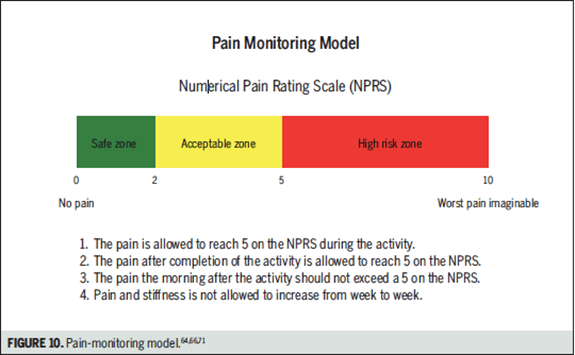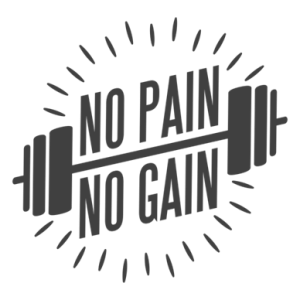You’ve heard the phrase “no pain, no gain!” but that doesn’t sound very scientific, does it? But what is the answer? Should rehab be pain-free? Or should you ignore your pain and just grin and bear it?
Should Rehab be Pain-Free?
The phrase “no pain, no gain” has been used by football coaches, bodybuilders, and other groups of people whom you should generally never take medical advice from. On the opposite end of the spectrum, practitioners also often tell patients that it is crucial to avoid exercises that are painful, as pain is the body’s way of telling you to stop.
However, research over the last few decades has answered this question. Rehab does NOT need to be pain-free! This question was recently answered in a meta-analysis. A meta-analysis is essentially a research paper that combines a bunch of research papers on the same topic to increase the strength of their conclusion.
This meta-analysis titled ‘Should exercises be painful in the management of chronic musculoskeletal pain? A systematic review and Meta-analysis’ combined 9 different studies investigating the rehabilitation of chronic musculoskeletal pain utilizing either pain-free exercises or exercises that encouraged or allowed for some pain. They concluded that the groups that allowed pain with rehab exercises had significantly better outcomes 3 months from the start of treatment. They also found no significant differences between the groups from 3-12 months and after 12 months. Utilizing this information, the authors concluded that pain with exercises does not need to be avoided and offers short-term benefits over pain-free exercises.
This research provides solace that working through some pain to address specific deficits will lead to improvements quicker than avoiding pain.
What About No Pain No Gain with Soft Tissue (Muscle) Injuries?
Muscle strains are some of the most common injuries as well as some of the hardest to recover from without pain. Fortunately, a study ‘Pain-Free Versus Pain-Threshold Rehabilitation Following Acute Hamstring Strain Injury: A Randomized Controlled Trial’ comparing the results of men rehabilitating hamstring injuries utilizing pain-free rehab or rehab allowing pain up to 4/10 found no negative effects of the program that allowed pain with exercise. Furthermore, they found that the group who were allowed to work through some pain had 15% greater hamstring strength at the time of their return to play as well as 2 months later.
What About Tendon Injuries?
Tendinopathies provide some of the best supporting evidence in favour of allowing pain during rehab, utilizing the pain monitoring model. The pain monitoring model (pictured below) is used as a way for patients to gauge the pain level they have both during an exercise and in the 24 hours afterwards.
Utilizing this model and the rules included below it, Silbernagel et al. in 2007 have shown that loading the tendon in the presence of pain less than or equal to 5/10 produces superior results for patients with both achilles and patellar tendinopathies, respectively.

- Pain of 2-5/10 is encouraged over pain of 0-2/10.
- These guidelines are for both performance of the exercise as well as a period of up to 24 hours afterwards.
- Symptoms should overall be improving from week to week.
- The guidelines are shown to be effective for activities outside of PT such as running and sport participation.
What about bone or joint pain?
The pain monitoring model has been shown to be effective in the treatment of patellofemoral pain as well as hip and knee osteoarthritis. A study of 10,000 patients with osteoarthritis in Denmark titled ‘Pain trajectory and exercise-induced pain flares during 8 weeks of neuromuscular exercise in individuals with knee and hip pain’ found that on average these patients experience a 10% increase in pain when they first start to exercise. However, they found that these patients can expect pain relief of 25% in just 6 weeks of exercising twice weekly.
The effects of exercise utilizing the pain monitoring scale are so profound in patients with knee osteoarthritis that in a group of patients eligible for a total knee replacement more than 75% chose not to undergo surgery a year after a 12-week exercise program. This study is titled ‘A Randomized, Controlled Trial of Total Knee Replacement’ These massive improvements are likely due to the well-established fact that improving muscular strength can reduce the stress placed on our joints during activities of daily living.
In conclusion
Pain during rehabilitation is ok and, in many cases, beneficial to recovery. It is important to remember that while small increases in pain during rehab are ok it is important that your symptoms are improving from week to week. If you are uncertain whether an exercise is safe, remember that any pain during and after exercise should be tolerable.




